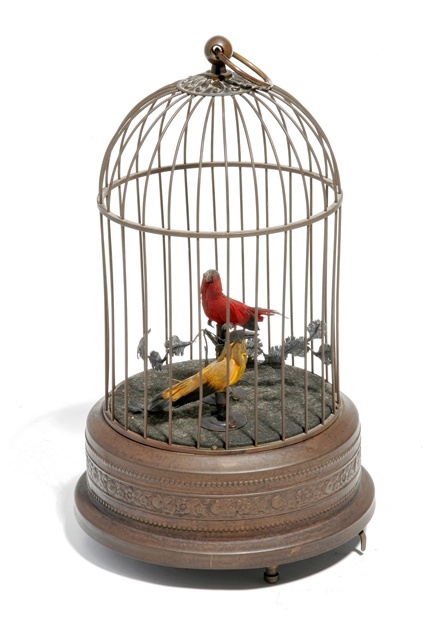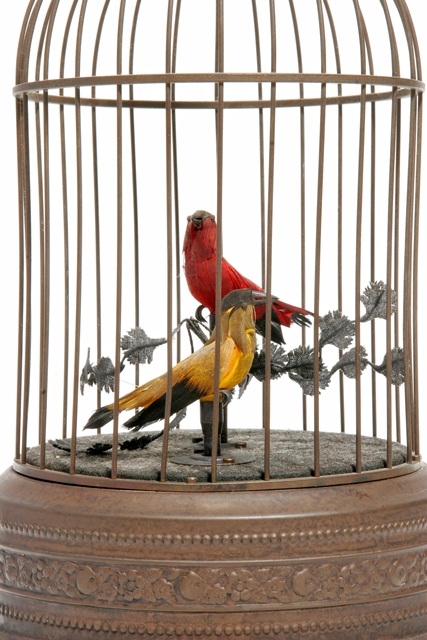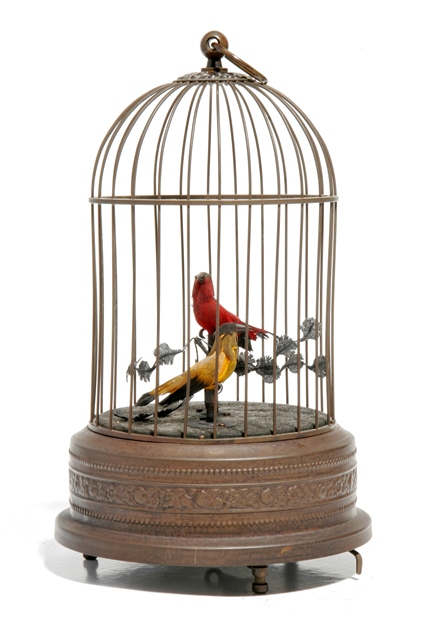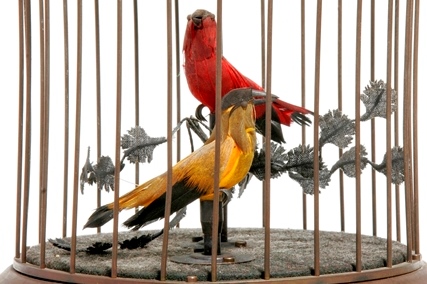Singing Birds Sound Box - Late 1800s
The invention of singing birds traces back to 1780, when the Swiss brothers Jaquet-Droz built the first Musical Cages with mechanical birds that seemed to fly while singing.
Musical cages were an alternative to the "serinette", the sound box used until the 17th century to teach melodies to canaries (serins in French).
Musical cages are a little machine with birds inside covered with real feathers or silver ones to imitate the real ones.
Therefore they were high-craftsmanship objects.
The original boxes worked thanks to a little pipe organ, but the necessity to reduce dimensions induced Jaquet-Droz to invent a gap that widens and retracts through a piston: this allows to use one mechanism only to produce all the notes, instead of a single organ pipe per note.
The Singing Bird exploit a complex mechanism: a spring motor activates a membrane that pulls air into a pressure tank. Through a valve, the air is pushed into a whistle inside where the piston is controlled by the first cam. A second came controls the air intake valve from the tank to the whistle and produces the sound; the motion of the birds is controlled by other cams and synchronized with the singing.
The invention of singing birds traces back to 1780, when the Swiss brothers Jaquet-Droz built the first Musical Cages with mechanical birds that seemed to fly while singing.
Musical cages were an alternative to the "serinette", the sound box used until the 17th century to teach melodies to canaries (serins in French).
Musical cages are a little machine with birds inside covered with real feathers or silver ones to imitate the real ones.
Therefore they were high-craftsmanship objects.
The original boxes worked thanks to a little pipe organ, but the necessity to reduce dimensions induced Jaquet-Droz to invent a gap that widens and retracts through a piston: this allows to use one mechanism only to produce all the notes, instead of a single organ pipe per note.
The Singing Bird exploit a complex mechanism: a spring motor activates a membrane that pulls air into a pressure tank. Through a valve, the air is pushed into a whistle inside where the piston is controlled by the first cam. A second came controls the air intake valve from the tank to the whistle and produces the sound; the motion of the birds is controlled by other cams and synchronized with the singing.











